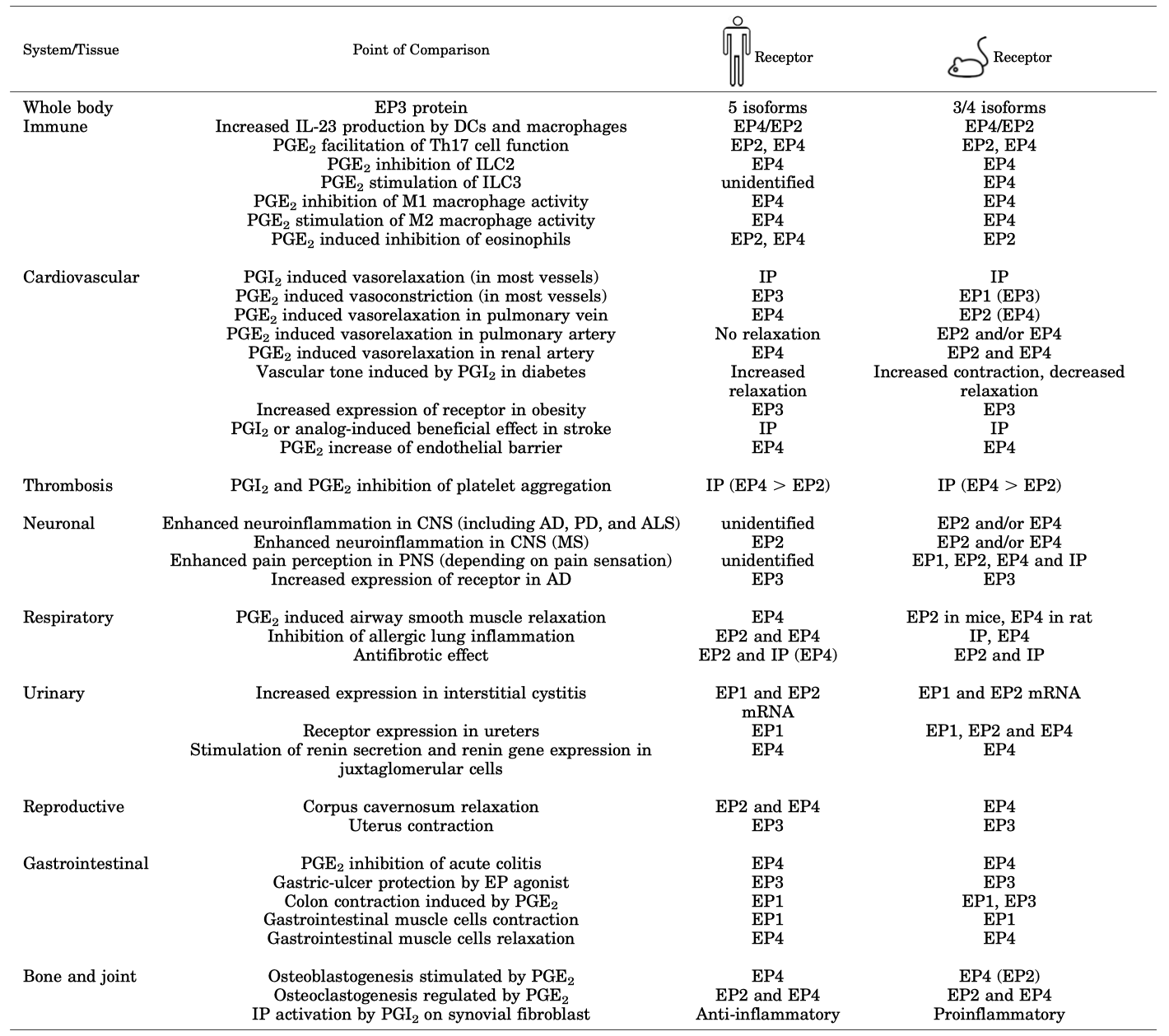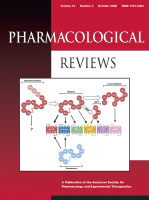International Union of Basic and Clinical Pharmacology. CIX. Differences and Similarities between Human and Rodent Prostaglandin E2 Receptors (EP1-4) and Prostacyclin Receptor (IP): Specific Roles in Pathophysiologic Conditions
Norel X, Sugimoto Y, Ozen G, Abdelazeem H, Amgoud Y, Bouhadoun A, Bassiouni W, Goepp M, Mani S, Manikpurage HD, Senbel A, Longrois D, Heinemann A, Yao C, Clapp LH
2020 • Pharmacol Rev • [pdf]

Prostaglandins are derived from arachidonic acid metabolism through cyclooxygenase activities. Among prostaglandins (PGs), prostacyclin (PGI2) and PGE2 are strongly involved in the regulation of homeostasis and main physiologic functions. In addition, the synthesis of these two prostaglandins is significantly increased during inflammation. PGI2 and PGE2 exert their biologic actions by binding to their respective receptors, namely prostacyclin receptor (IP) and prostaglandin E2 receptor (EP) 1-4, which belong to the family of G-protein-coupled receptors. IP and EP1-4 receptors are widely distributed in the body and thus play various physiologic and pathophysiologic roles. In this review, we discuss the recent advances in studies using pharmacological approaches, genetically modified animals, and genome-wide association studies regarding the roles of IP and EP1-4 receptors in the immune, cardiovascular, nervous, gastrointestinal, respiratory, genitourinary, and musculoskeletal systems. In particular, we highlight similarities and differences between human and rodents in terms of the specific roles of IP and EP1-4 receptors and their downstream signaling pathways, functions, and activities for each biologic system. We also highlight the potential novel therapeutic benefit of targeting IP and EP1-4 receptors in several diseases based on the scientific advances, animal models, and human studies.
SIGNIFICANCE STATEMENT: In this review, we present an update of the pathophysiologic role of the prostacyclin receptor, prostaglandin E2 receptor (EP) 1, EP2, EP3, and EP4 receptors when activated by the two main prostaglandins, namely prostacyclin and prostaglandin E2, produced during inflammatory conditions in human and rodents. In addition, this comparison of the published results in each tissue and/or pathology should facilitate the choice of the most appropriate model for the future studies.

